Hogan Design and the quest for usability
You would think that the concept behind User Experience (UX), or user centered design would be a common sense sort of thing in design, but until recently it was not. In the past, when a designer received a project from a client most designers first and foremost, wanted to please that client – primarily the one marketing manager, business owner, person in charge, etc. who hired them for the project in the first place. I guess you would call that “client-centered” design or even designer-centered design since we must first please ourselves before the client even sees a concept. What I learned from my courses with the Interaction Design Foundation (IDF) was something quite different. Eye opening in fact. More about UX design and IDF later.
When I was a small boy, my grandmother told me she was sound asleep one night when she suddenly sat up in bed and said to herself “my brother just had a heart attack.” At first, she dismissed it as just a bad dream, but couldn’t shake the feeling that there was more to it than a nightmare. Her brother lived hundreds of miles away and was healthy as far as she knew. Later she found out he did have a heart attack at just about the time she awakened that night. Strange, but true. I’ve always been skeptical of clairvoyance, crystal balls and the like, but truth is, maybe we are all connected somehow. Maybe our empathy for each other allows us to see beyond ourselves in ways we don’t yet understand. Could we as designers use this connection, this innate empathy to improve the lives of others …and our designs?
A little background about me: my name is Rick Hogan, owner/graphic designer at Hogan Design. I have a BFA Design Communication degree from Texas Tech and I have operated one of the most successful solo design firms in the Dallas area for over 30 years and I am now 62 years old. Throughout my career, my business focus had been mainly print collateral and packaging. Now due to the changing times and out of necessity, I am focusing on digital design and adding UX/UI web design and development to my print design capabilities with the help of online classes like those from IDF, Free Code Camp and Codecademy.

Right out of high school I got into Texas Tech University in the pre-med program. I thought I wanted to be a doctor. I had a real talent for art, but it was just a hobby to me then. Medicine and making a good living were my interests and my focus. Back in the late 1970’s graphic design was pretty much unheard of. It was sort of mixed in with advertising and no one really seemed to know the difference. I sure didn’t. Little did I know I was soon to find out. After several semesters of mediocre grades in chemistry and biology, I started to rethink my decision to be in the pre-med program at Texas Tech. No one bothered to tell me that pre-med is not required to get into med school so my ignorance led me to fall back on my art skills and change my major to art and design. I really wanted to be a fine artist or an illustrator at that point, but I thought it was unlikely that I could make a living. Advertising seemed like a viable option. At Texas Tech, design was in the art department, advertising was in the business department. That’s all I needed to know – design was for me.
At the time, ArtCenter in Pasadena, California was one of the most famous Design schools in the country. One of the best instructors from ArtCenter decided to come to Texas Tech. Before ArtCenter he owned one of the hottest design firms in LA. Well, this guy came to Tech and created a top-notch design department which I was lucky enough to be accepted into. I couldn’t have asked for a better design education. It was a tough program. Many started, only a few made it through. I was one of the few and graduated with a BFA degree in Design Communication in 1982.
We were taught how to recognize and create “good design” in other words, conceptual visual communication that is aesthetically pleasing to the eye. The focus was totally on print. At the time there was no such thing as a computer as we know them today. There were these giant machines that could do calculations of some sort using huge stacks of punch cards. No hint of the interactive future that was coming or the need for design that was considerate of the user. The closest thing we had to UX was to never design something that was hard to read or hard to handle. We were taught to use bigger type if the reader was probably going to be older. That’s it. Oh, I almost forgot, never design a business card that won’t fit into someone’s wallet or standard business card caddy.
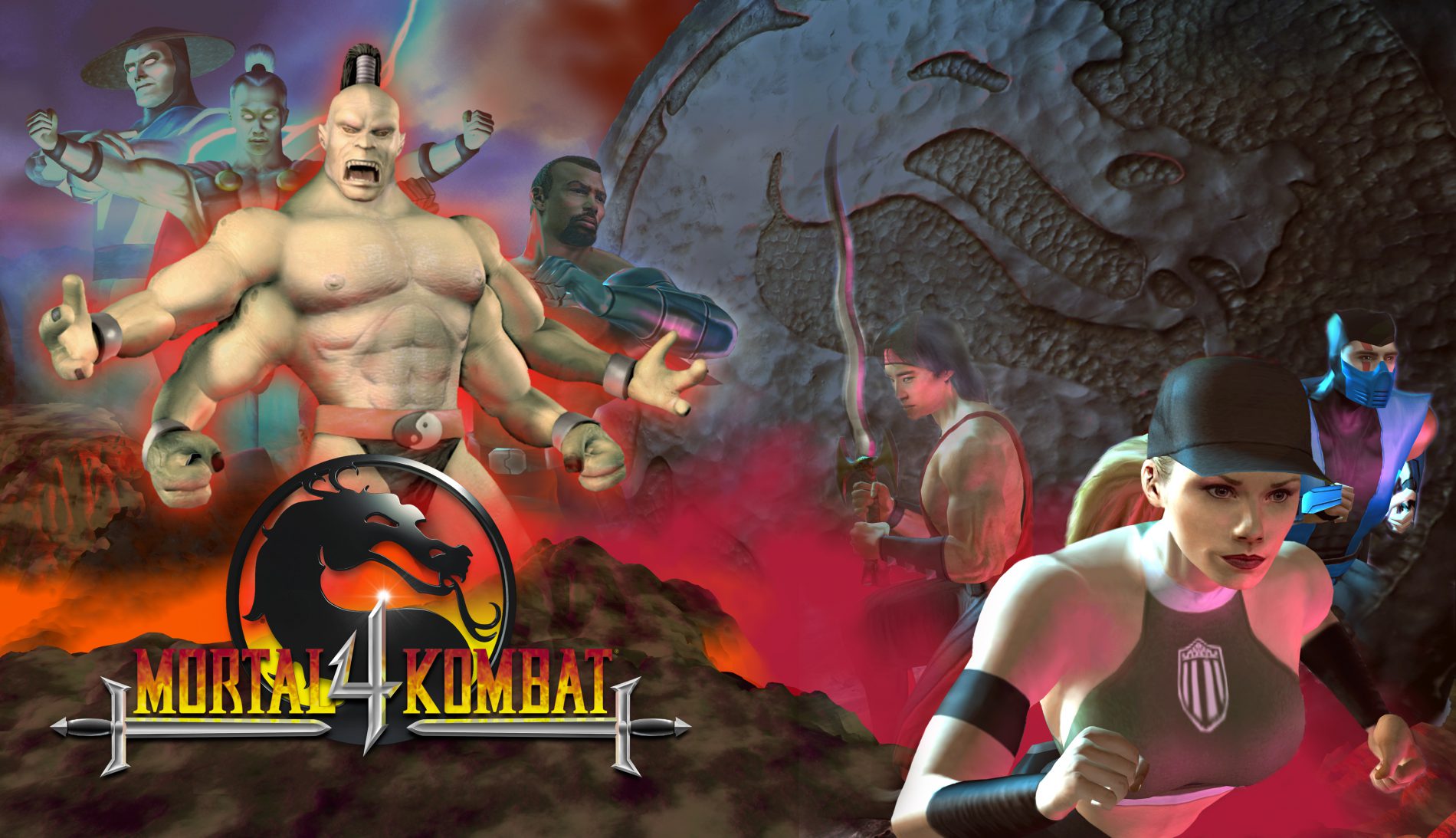
After graduating from Texas Tech, I came to Dallas by way of Denver and was hired by a small design firm. Right away I figured out that my job was to create designs that pleased my boss. As far as he was concerned, the end user was his client. The actual end user was far from our minds. I was there for about five years and learned the art of “paste up,” I saw an opportunity to start my own design business. With no business experience at all it was a big leap of faith, but it worked out great and I was able to quadruple my income in the first year and never looked back. Design was my business and business was good. That was right about the time computers were first appearing in the design world. Apple Macintosh, Photoshop, Adobe were names unknown, but as you know, soon to be bigger than big. It didn’t take a crystal ball to see that this was the wave of the future. I jumped right on that wave and rode it for all it was worth. My T-square and X-Acto knife were retired and I invested in a Mac and design software. I realized that I loved computers and was enthusiastic about learning how to use them for my business. Self-taught all the way.
Thirty years ago no one would have imagined something called the internet and devices called lap tops and smart phones would change the very nature of the commercial art/graphic design business. Print was king. Every business needed brochures, business cards and letterheads. Fast forward to around the year 2000 when the internet began to squeeze out print as a major way businesses communicate with their customers. Brochures and letterheads started to be replaced with emails and web sites. Fast forward another ten years and smart phone apps became the big thing. Many print shops and print designers were going out of business. Many small design shops closed and their owners became corporate employees. Luckily for me I had a loyal client who has sent me a ton of work for many years. With his patronage I was able to keep my one-man shop open and continue doing print design right up to the present. Still it was clear that the glory days of print were over and my business was suffering. I knew I needed to do something so, after long deliberation, I decided I better update my skillset. UX caught my attention after seeing all the jobs available and the higher pay offered. A recruiter suggested I learn HTML, CSS and Javascript as well. In my pursuit of these I came across WordPress – an open source program used to create websites. Now you’re talking. I had created several websites using Dreamweaver and Weebley so I was not a total newb. These all seemed like viable directions for my business into the future, especially UX and WordPress. Now I asked myself, what’s the best way to study UX/UI?
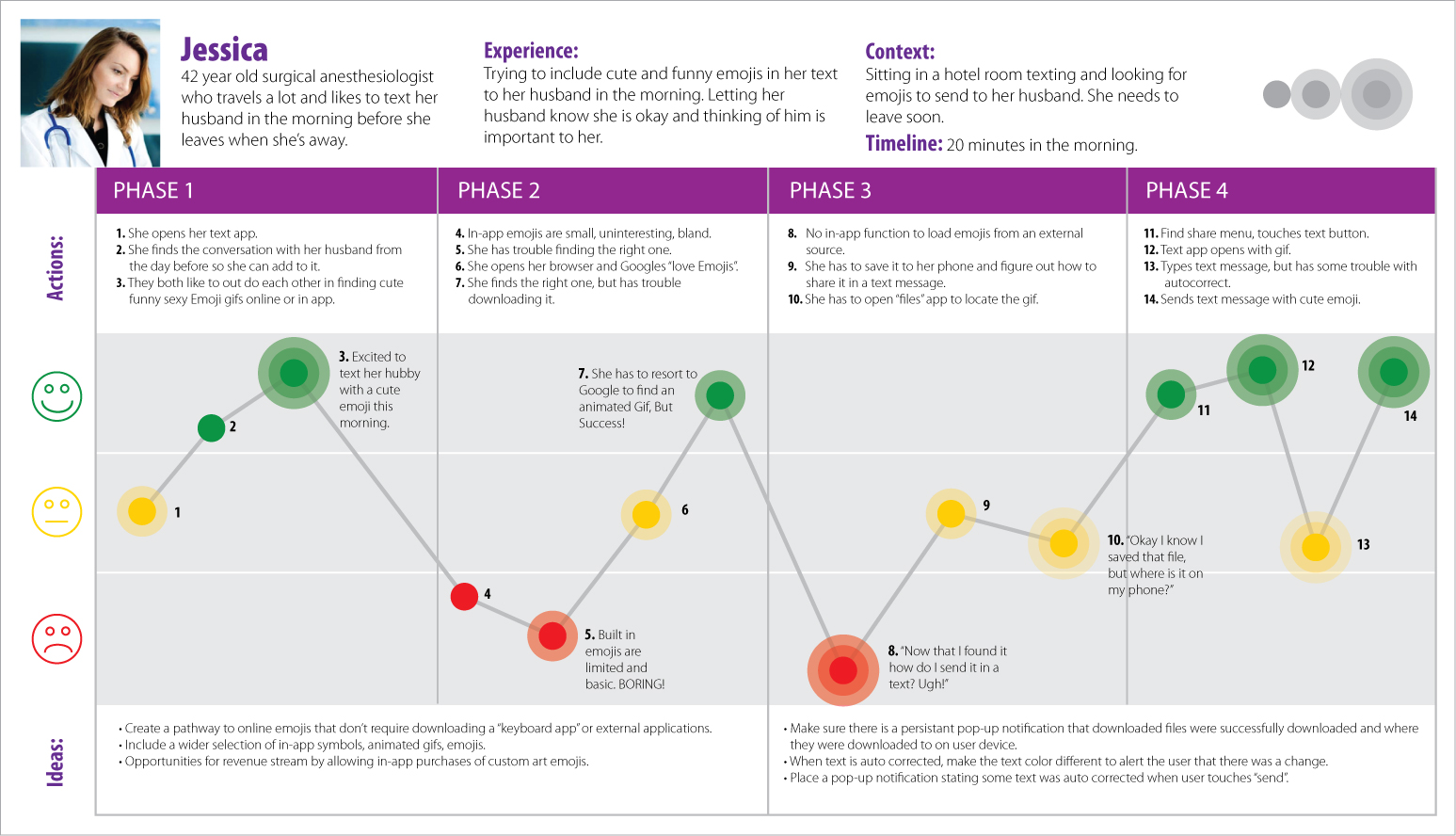
After spending many hours and several days researching online UX schools it was clear to me that The Interaction Design Foundation was the best choice for learning and getting certified in UX/UI design. I was encouraged by several people that I met on LinkedIn who were employed as UX professionals. They recommended IDF and had obtained certificates from there themselves. If you compare the IDF program and cost, there is no other school that comes close. IDF functions as a non-profit and the tuition is extremely affordable for just about anyone. So, with a certain amount of skepticism I signed up with IDF and paid for a year of online training. My skepticism arose more from ignorance on my part regarding online training in general. I’m happy to say I’m a believer now.
The IDF program has ten areas of study called learning paths, each area has eight to ten courses, each with a certificate you can earn. To complete an area of study, UX Designer for instance, you would need to pass ten courses and receive ten certificates: two foundation courses, two beginner, two intermediate and 4 advanced courses. Each course has 5 to 10 lessons, each lesson usually has a video and or several paragraphs of information and a short quiz at the end. They even list how long it should take to complete each lesson and course. None are timed so you can learn at your own pace. They do restrict access a bit so each course is spread out over several weeks. You can take multiple courses at the same time. There are plenty of links for help and networking as you learn as well.

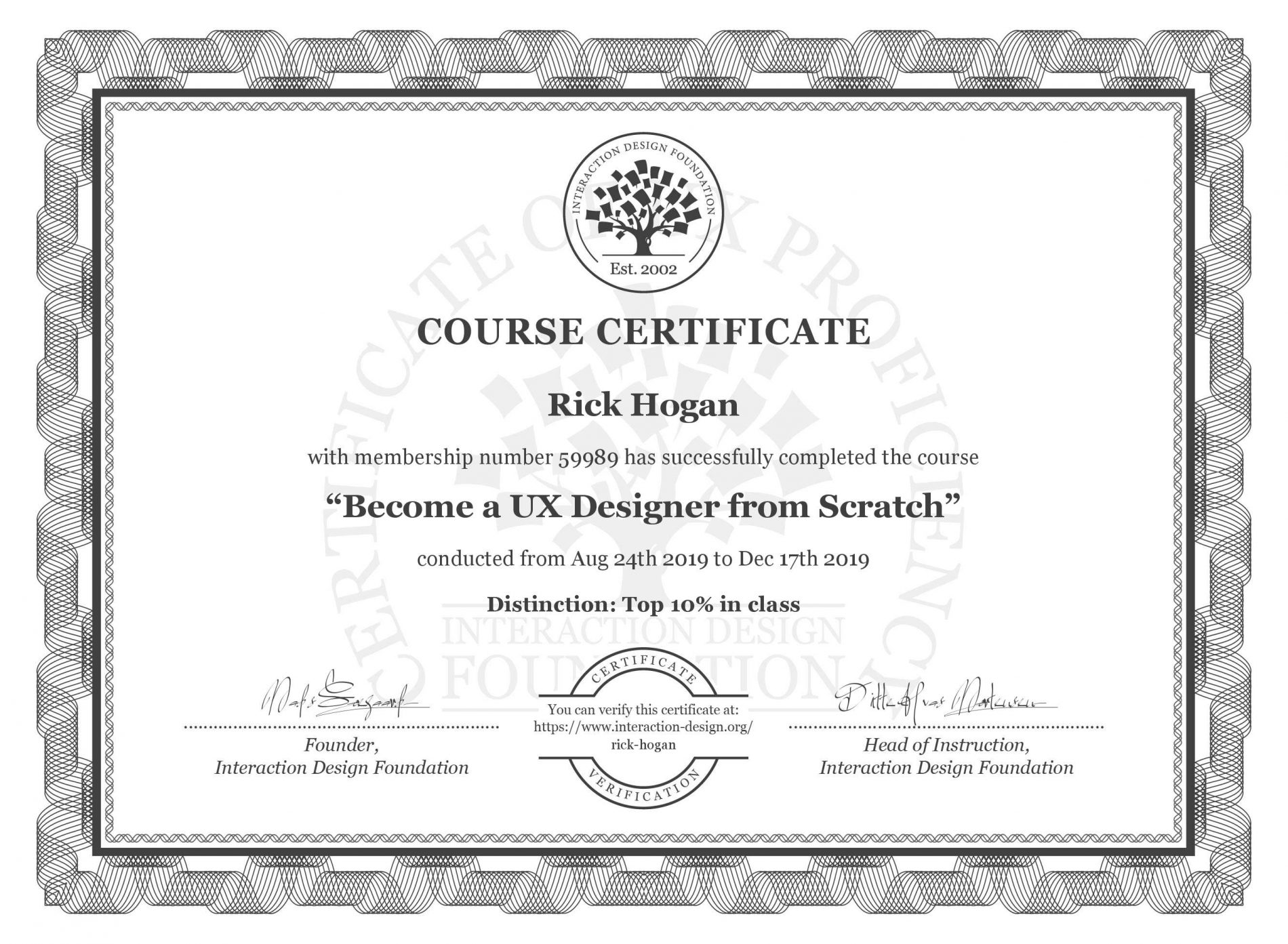
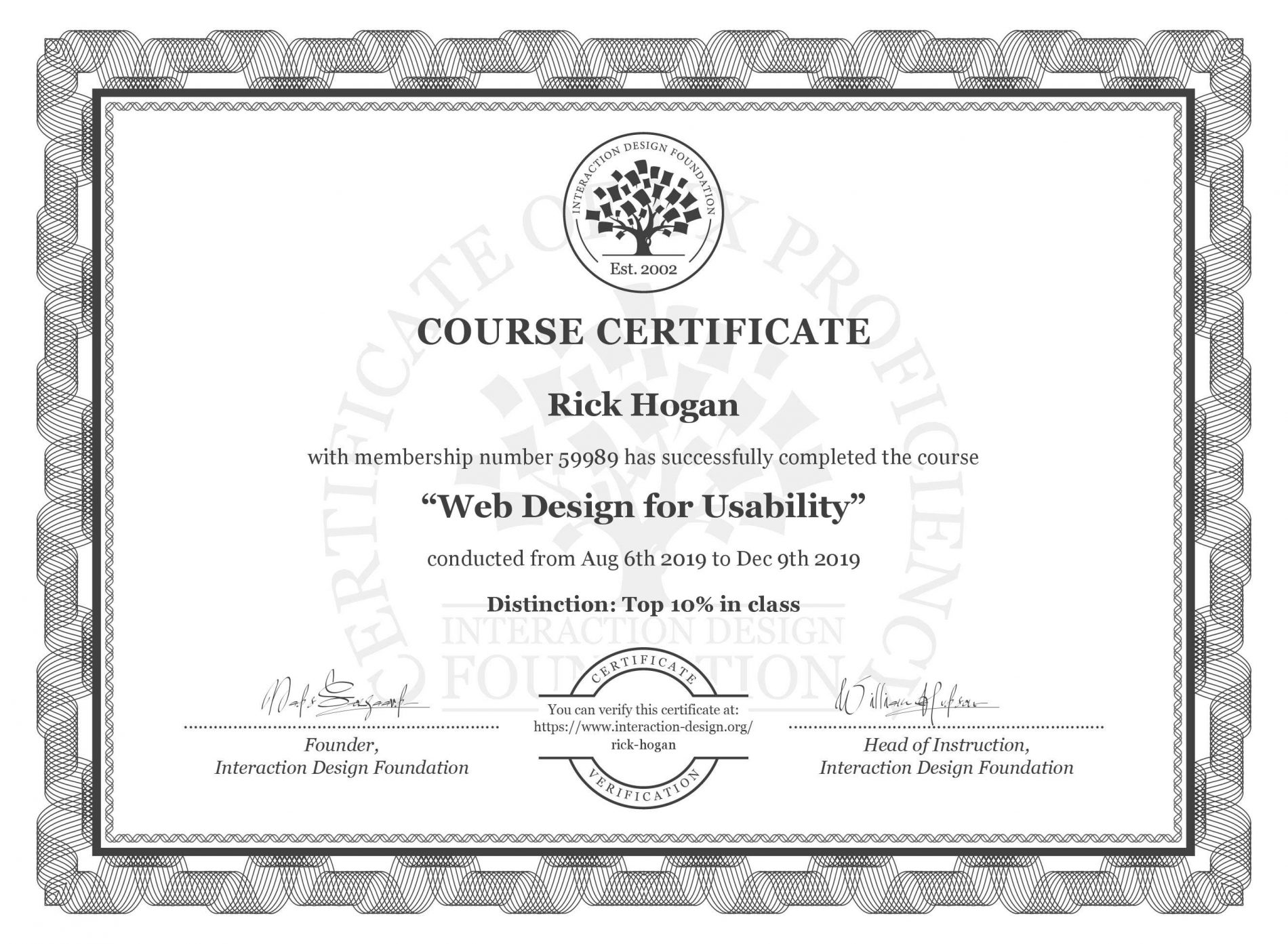
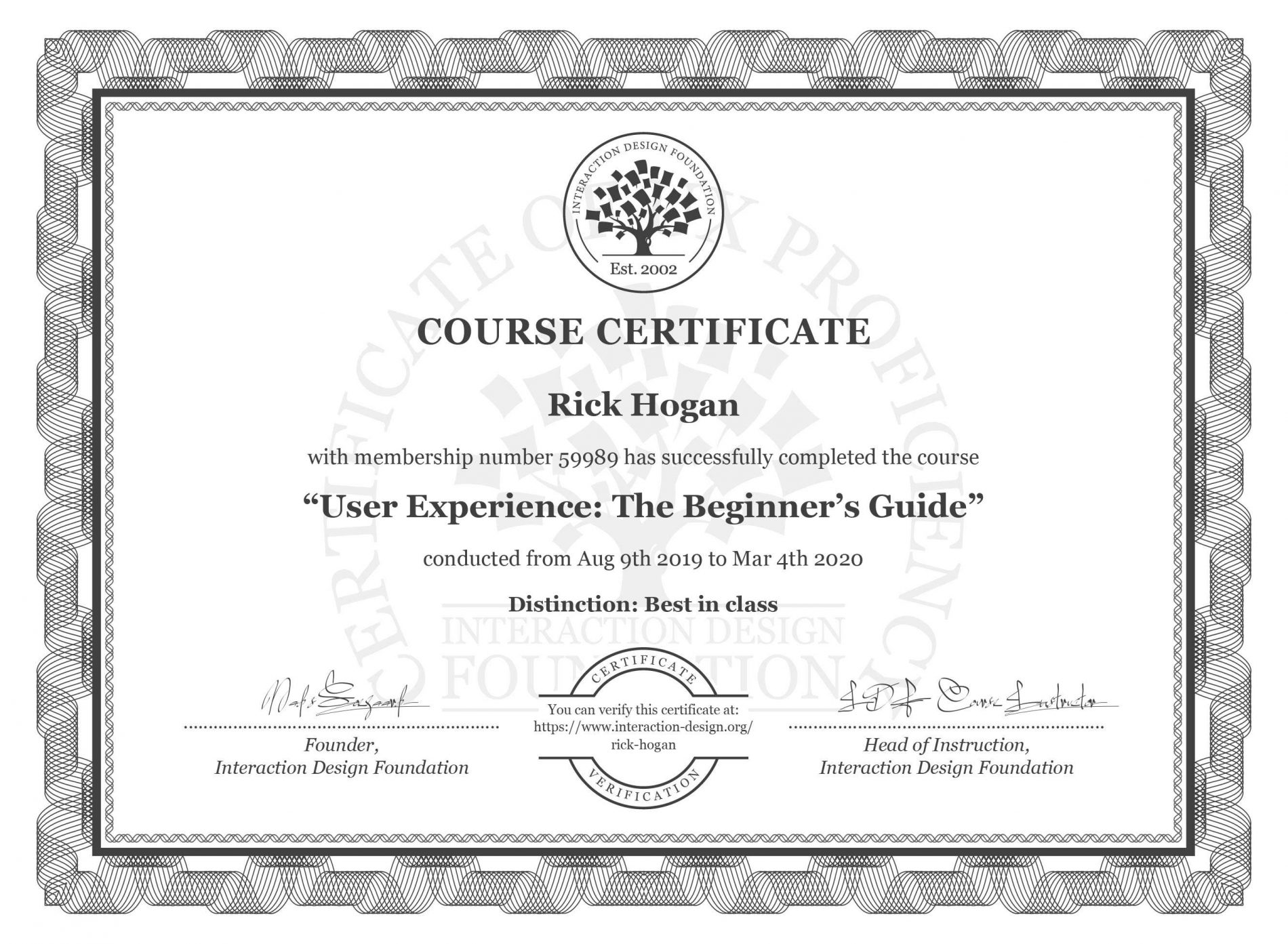
The courses I took on IDF were really very informative and actually fun to take. The wording of the lessons was easy to understand, for the most part, and the quizzes were set up so you could go back and review the lesson as you answer the questions. Most questions were multiple choice or short essay. I have completed 4 courses so far in the UX Designer learning path for an average of 98.75% score. That put me in the top 1% of those taking the courses worldwide. I figure if I can do it, so can just about anyone. Learning about design thinking, empathy for users, accessibility and other aspects of UX design will add a whole new dimension to my design practice. Developing personas, wire-frames, affinity diagrams, iteration and prototyping were all things I learned from IDF courses. These were terms I had never even heard of before, but now can bring into practice with confidence. I’m still in the early stages of my learning, but I feel like I’m well on my way to being a full-fledged UX designer. I would highly recommend IDF to anyone interested in furthering their career into the UX field. Graphic designers especially can benefit from learning user centered design thinking from IDF.
Can user centered design thinking improve our designs and allow us to reach far beyond our own grasp? Can our connection to others actually help our businesses? Can an old dog learn new tricks – can an old designer learn UX? I believe so. I KNOW so. When you think about how our designs affect our users then everyone involved can benefit. Projects will improve, profits will grow, clients and their customers will be happier.
Recent Comments